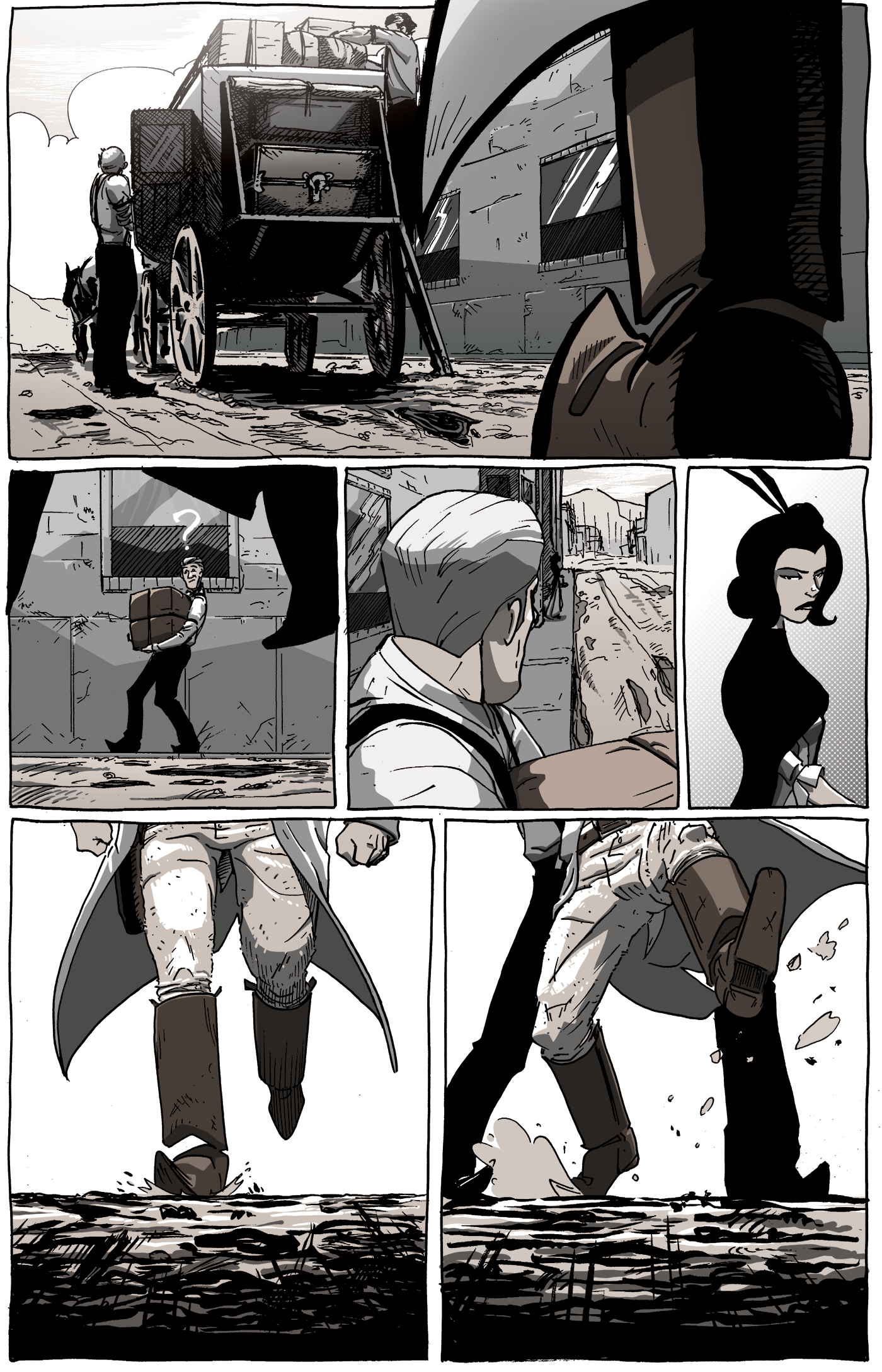An Unstoppable Force
Whatever my next project is, I’m going to push my rendering duties a bit more than what I’ve done in Long John or any project before it.
I tend to keep my art fairly clutter free, relying instead on shading and (to the extent that Long John has it) coloring to add texture, depth, and scale. I do that because, frankly, I enjoy drawing like that and it allows me to focus on the stuff I like to draw––people, mainly. However, because of that approach to the art, it means that the shading and coloring stage is very long, as I’ve complained about before.
There are a few panels, like the first one on this page, where I decide to lean into the details and the rendering on the page instead of letting Dan-the-colorist do all the work. So, on the coach above, I dumped some ink into the hard black shadows, into some hatched shading, and extra details to distinguish materials from each other––making wood look like wood, making metal look like metal, making mud look like mud, etc. While it took some extra time, two things resulted from it:
- It was fun to do. While scary at first, once I gained a little bit of confidence it was a joy to really bring a drawing to life like this.
- It made coloring this page much easier. Aside from a few highlights and light shading, it surprised me when I put down the flat colors and saw that it was basically done.
While I’m not going to alter my style for Long John, especially this late in the game, it was fun to drop in a panel like this to lend it some extra gravitas. By making it stand out a bit more, it will draw the eye (something done in manga a lot, actually. For more about this idea, be sure to read Scott McCloud’s wonderful Understanding Comics) and, in theory, cause the reader to linger and study the image a bit longer than the average panel.
However, with whatever my next project will be––be it a large scale one or a short one-off––I would like to engage with this detailed approach a little more. Texture and shade rendering in ink is a skill set of mine that doesn’t feel particularly developed and, as evidenced by my experience with this chapter, seems like something I’d like to learn more about.



Discussion ¬